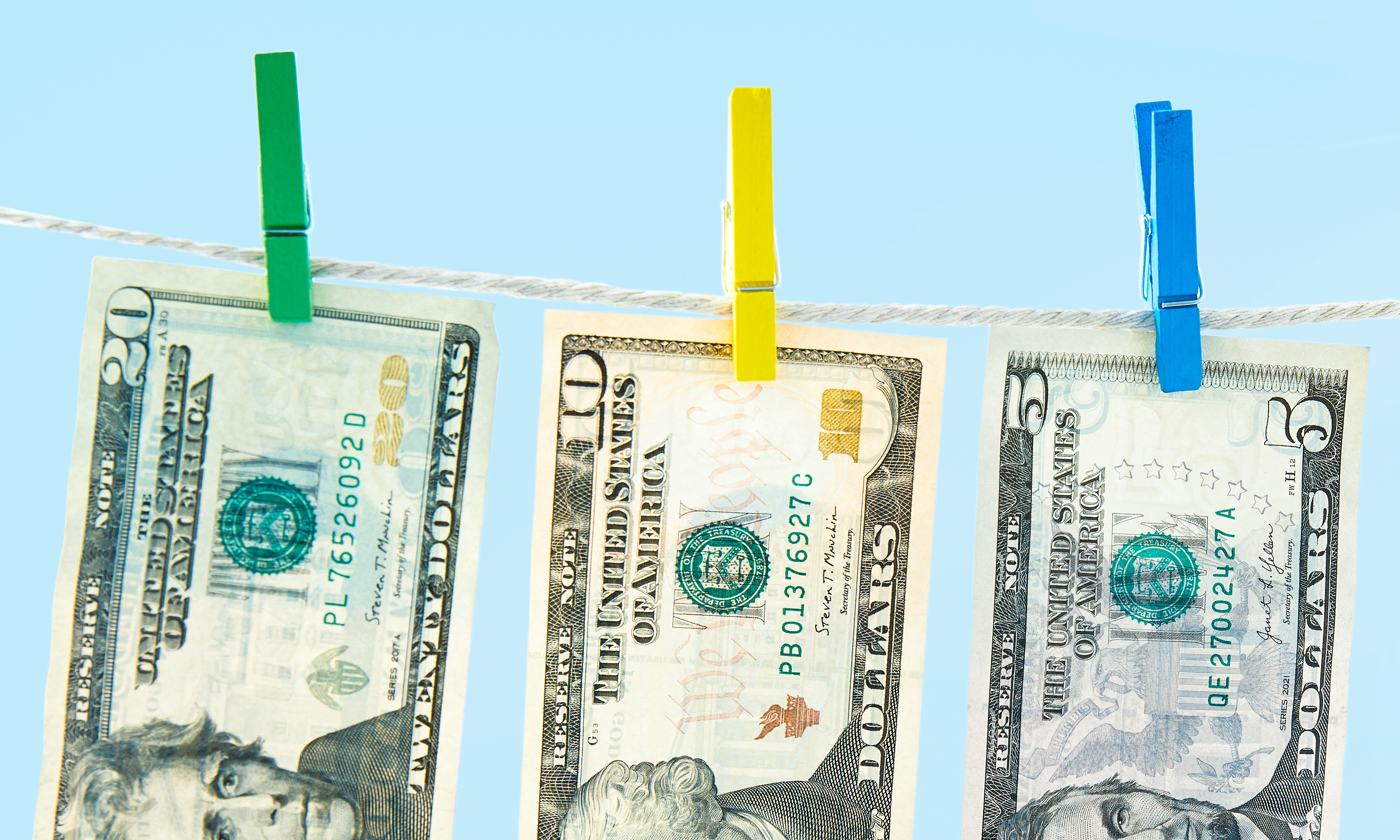Build a Bond Ladder with ETFs
Exchange-traded funds give a new twist to an old technique to navigate a tricky market and manage cash flow.


The bond world can seem set in its ways, but once in a while an innovative product comes along to upend the notion. In this case, we’re talking about target-maturity bond exchange-traded funds, currently offered by Invesco and iShares. The ETFs invest in bonds in a particular sector—corporate debt or municipals, say—with all of the bonds maturing in a specific year. How the ETFs work takes some explaining, and they’re not right for everyone. But they offer investors some unique benefits.
Though not well known to many investors, these ETFs are not exactly new. The earliest of these types of funds, an iShares series of target-maturity muni bond ETFs, arrived in 2010. But target-date bond ETFs are growing in popularity, especially among investors who are nearing retirement or already retired.
There’s a lot to like, starting with the fact that, like individual bonds that you buy and hold to maturity, these ETFs “mature.” Come December of their target year, the funds close and return all of the capital to shareholders. “It’s like buying and holding to maturity a single bond, except that it’s a fund that holds hundreds of bonds,” says Karen Schenone, head of fixed-income strategy for iShares.
From just $107.88 $24.99 for Kiplinger Personal Finance
Become a smarter, better informed investor. Subscribe from just $107.88 $24.99, plus get up to 4 Special Issues

Sign up for Kiplinger’s Free Newsletters
Profit and prosper with the best of expert advice on investing, taxes, retirement, personal finance and more - straight to your e-mail.
Profit and prosper with the best of expert advice - straight to your e-mail.
That’s chiefly what makes these funds easy to incorporate into a bond ladder, an old-school technique to boost yields and reduce interest rate risk without locking up all of your money for the long term. You spread your investments across bonds with staggered maturities—the “rungs” of the ladder—and as portions of your portfolio mature at regular intervals, you reinvest the proceeds in another rung further up the maturity line (or spend the cash or invest it elsewhere).
We’ll walk you through the basics of laddering, how these ETFs work and how to use them in your portfolio. (Returns and data are through November 6.)
The upside of laddering
Fans of bond laddering can sound like a late-night commercial. (It slices, it dices—and so much more!) That’s because laddering addresses multiple goals: It provides a steady stream of income, it smooths out interest rate risk in a bond portfolio, and it can offer risk-averse investors some stability.
Bond prices and interest rates tend to move in opposite directions. When interest rates rise, bond prices fall, and vice versa. That doesn’t hurt you if you buy and hold your bonds to maturity. And in a rising interest rate environment, laddering allows you to reinvest the proceeds of a maturing rung into bonds that pay higher yields.
When rates are falling, laddering gives you flexibility because only a portion of the bond portfolio matures at one time. You can then decide whether to fund another rung in the ladder or put the money in an asset class that’s more attractive. “You’re not forced to make a big bet on the direction of interest rates,” says Jason Bloom, head of global ETF strategy at Invesco.
A bond ladder can also confer some peace of mind. “If the market is taking a crazy tumble, we know that we’ll have this cash washing ashore” when a target-maturity bond ETF matures, says Jonathan Harrison, a certified financial planner in Overland Park, Kan.
How they work
Target-maturity funds from Invesco are called BulletShares; iShares dubs its ETFs iBonds. BulletShares and iBonds ETFs focus on specific sectors: municipal bonds, investment-grade corporate debt (bonds with credit ratings that range between triple-A and triple-B) or high-yield corporate IOUs (bonds rated between double-B and triple-C). BulletShares also has a target-maturity series built around emerging-markets debt, and iBonds offers a series focused on Treasuries.
The target-maturity ETFs are issued in one-year intervals and typically go out as far as 10 years. The nearer the fund’s target year, the lower the yield. The 2021 iBonds investment-grade corporate debt ETF, for instance, currently yields 0.36%. The 2030 fund yields 1.92%.
Jared Hoole, a certified financial planner in Burlington, Mass., uses target-maturity ETFs to churn out predictable cash flows for his clients’ annual living expenses. Says Hoole: “I build a 10-year bond ladder, matching up each year with their annual income needs.” For a retiree who will need $100,000 for living expenses in 2022, for instance, Hoole invests that amount in a high-quality corporate bond target-maturity ETF that matures at the end of 2021 so that the money (plus return) is ready when needed. And so on.
On top of delivering a diversified bundle of bonds, these funds are cheap. Annual expense ratios for the corporate bond ETFs from BulletShares and iBonds are just 0.10%. And there’s no commission to trade the ETFs at most brokerage firms. Finally, although the funds are index-based, they come with some professional oversight. Bond experts regularly monitor the portfolios to make sure each holding meets the fund’s desired creditworthiness and maturity profile. For example, if an issuer of a bond held in one of the high-quality corporate ETFs slips to a junk rating, the bond has to exit the portfolio.
The ETFs also pay a small monthly distribution (in addition to the return of your investment plus returns on that capital when the fund matures). The monthly payouts can fluctuate, in part because of any adjustments made to the portfolio from month to month. The iShares iBonds Dec 2024 Term Corporate ETF (symbol IBDP), for instance, paid $0.065 per share in April 2020 but in November 2020, the distribution was $0.051.
Using them wisely
If laddering with target-maturity ETFs sounds like a strategy you want to try, first settle on the bond sector you want to invest in—Treasuries, investment-grade corporate bonds or munis, for example—then spread your money in progressively dated ETFs up the ladder rungs.
Use online tools to help you visualize and plan. Both iShares and Invesco have tools that help you structure a ladder (using their respective target-maturity ETFs, of course). You set the time frame, choose the funds and decide how much money to put in each ladder rung as a percentage of the portfolio.
Say you want to build a five-year, $100,000 portfolio with Invesco BulletShares investment-grade corporate ETFs. You can put $20,000 in each of the five funds with target years between 2021 and 2025. According to the BulletShares tool, such a portfolio would currently yield 0.70% overall.
We back-tested the ladder and found that this portfolio would have returned 4.8% over the past 12 months. That falls short of the 9.1% gain in the Bloomberg Barclays US Corporate Bond index. But over that stretch, the ladder portfolio suffered only about half of the benchmark’s volatility.
Given how low interest rates are these days, a shorter ladder may be better than a longer one. Harrison, the Overland Park financial planner, prefers to build ladders that go out only four years. So this year, for example, his clients will hold equal investments in ETFs maturing in 2021, 2022, 2023 and 2024. Interest rates are likely to stay zero-bound for some time, but a shorter time frame allows investors to be “nimble” if rates rise, he says.
Amy Goan, a certified planner in Issaquah, Wash., builds even shorter ladders of two years for some of her clients. “They don’t have to worry about the stock market crashing, because they have this money set aside to cover living expenses,” says Goan. And it allows her to be more aggressive with the rest of their portfolio. “Most of my clients need some growth,” she says.
Finally, it’s a good idea to balance a target-maturity ETF ladder with other fixed-income funds. For his older clients who are near retirement or already retired, Harrison splits bond portfolios between a ladder and a blend of actively managed bond funds and bond index funds that invest in the total bond market, high-yield debt and inflation-protected securities.
Profit and prosper with the best of Kiplinger's advice on investing, taxes, retirement, personal finance and much more. Delivered daily. Enter your email in the box and click Sign Me Up.

Nellie joined Kiplinger in August 2011 after a seven-year stint in Hong Kong. There, she worked for the Wall Street Journal Asia, where as lifestyle editor, she launched and edited Scene Asia, an online guide to food, wine, entertainment and the arts in Asia. Prior to that, she was an editor at Weekend Journal, the Friday lifestyle section of the Wall Street Journal Asia. Kiplinger isn't Nellie's first foray into personal finance: She has also worked at SmartMoney (rising from fact-checker to senior writer), and she was a senior editor at Money.
-
 Dow Hits New High Then Falls 466 Points: Stock Market Today
Dow Hits New High Then Falls 466 Points: Stock Market TodayThe Nasdaq Composite, with a little help from tech's friends, rises to within 300 points of its own new all-time high.
-
 The Best Vanguard Bond Funds to Buy
The Best Vanguard Bond Funds to BuyInvestors seeking the best Vanguard bond funds can pick between mutual funds and ETFs spanning maturities, credit qualities, tax treatment and geographies.
-
 Are You Afraid of an IRS Audit? 8 Ways to Beat Tax Audit Anxiety
Are You Afraid of an IRS Audit? 8 Ways to Beat Tax Audit AnxietyTax Season Tax audit anxiety is like a wild beast. Here’s how you can help tame it.
-
 9 Types of Insurance You Probably Don't Need
9 Types of Insurance You Probably Don't NeedFinancial Planning If you're paying for these types of insurance, you may be wasting your money. Here's what you need to know.
-
 Money for Your Kids? Three Ways Trump's ‘Big Beautiful Bill’ Impacts Your Child's Finances
Money for Your Kids? Three Ways Trump's ‘Big Beautiful Bill’ Impacts Your Child's FinancesTax Tips The Trump tax bill could help your child with future education and homebuying costs. Here’s how.
-
 Key 2025 Tax Changes for Parents in Trump's Megabill
Key 2025 Tax Changes for Parents in Trump's MegabillTax Changes Are you a parent? The so-called ‘One Big Beautiful Bill’ (OBBB) impacts several key tax incentives that can affect your family this year and beyond.
-
 Amazon Resale: Where Amazon Prime Returns Become Your Online Bargains
Amazon Resale: Where Amazon Prime Returns Become Your Online BargainsFeature Amazon Resale products may have some imperfections, but that often leads to wildly discounted prices.
-
 What Does Medicare Not Cover? Eight Things You Should Know
What Does Medicare Not Cover? Eight Things You Should KnowMedicare Part A and Part B leave gaps in your healthcare coverage. But Medicare Advantage has problems, too.
-
 Roth IRA Contribution Limits for 2026
Roth IRA Contribution Limits for 2026Roth IRAs Roth IRAs allow you to save for retirement with after-tax dollars while you're working, and then withdraw those contributions and earnings tax-free when you retire. Here's a look at 2026 limits and income-based phaseouts.
-
 Four Tips for Renting Out Your Home on Airbnb
Four Tips for Renting Out Your Home on Airbnbreal estate Here's what you should know before listing your home on Airbnb.
-
 Five Ways to a Cheap Last-Minute Vacation
Five Ways to a Cheap Last-Minute VacationTravel It is possible to pull off a cheap last-minute vacation. Here are some tips to make it happen.